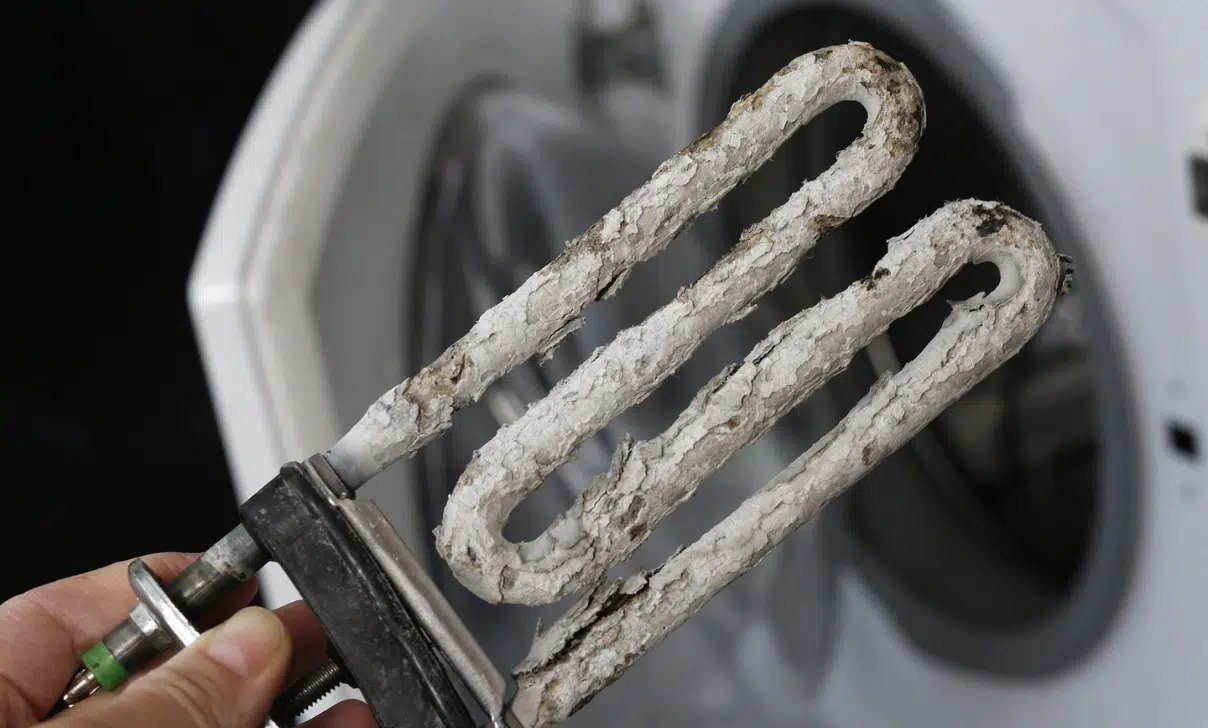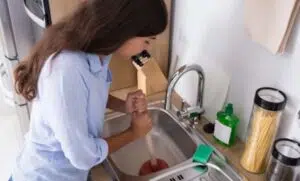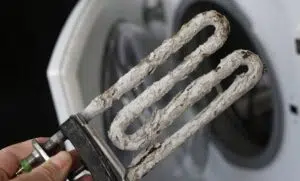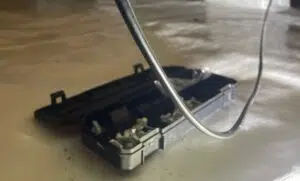You hear a soft rattle from the utility closet. Showers run hot, then bail out early. The bill creeps higher for no clear reason. That combo usually points to mineral gunk settling in the tank and choking performance.
Folks try quick fixes, flip a breaker, fiddle with the thermostat, and the problem keeps coming back. If you want fewer surprises and longer equipment life, regular water heater maintenance is the move that actually works.
We service homes across Charleston, Mount Pleasant, and Summerville every day, so we see this play out up close. A thin layer of sediment becomes a stubborn pad at the bottom of the tank. Heat has to fight through it.
Elements overwork. Capacity shrinks. And yes, those loud pops during a heat cycle are steam bubbles punching through sludge. Leave it long enough and you’re staring at a no-hot-water morning you didn’t plan for.
What Sediment Really Does
Minerals fall out of heated water and settle low in the tank. Over time that layer:
- Acts like insulation between the burner or element and your water, which wastes energy.
- Traps steam pockets, leading to rumbling and popping during heat cycles.
- Steals usable volume, so showers end sooner even though the tank size hasn’t changed.
- Beats up components like dip tubes, elements, and relief valves until they call it quits.
Ignore it and small annoyances become major service calls.
Early Clues You Can Catch
Noises during heat-up
Rumble, crackle, or a popcorn sound usually means steam fighting through sediment.
Shorter hot showers
You didn’t change your routine. The tank just holds less usable hot water now.
Temperatures that wander
A buried element or stressed thermostat can’t keep a steady mix, so taps drift lukewarm.
Cloudy water that clears
Agitated particles cloud the first glass, then settle. Pair that with noise and you’ve got a pattern. Spot two or more of these? Time to get a pro involved before the tank takes permanent damage.
Flush or Replace: How We Decide On Site
Not every heater is doomed. Our techs do a quick, practical assessment:
- Age and condition: Newer units with moderate buildup often bounce back after a thorough flush and anode check. Older tanks with chronic issues may be near the finish line.
- Severity of buildup: Light to moderate sediment can be lifted and drained with the right flow and valves. Heavy, baked layers point toward limited returns from flushing alone.
- Component health: We test elements, thermostats, anodes, and dip tubes. Sometimes a targeted part swap restores output without the cost of a full replacement.
We explain what we found in plain language, give options, and quote a flat price before work starts. No open tabs. No “we’ll see” bill.
Why Homeowners Call Us First
We’re locally owned, not a dispatch board guessing at who shows up. That matters for speed and accountability.
- Flat-rate, upfront pricing. You approve the number before the tools come out.
- Warranty on our work. If we touch it, we stand behind it.
- Full-service plumbing. If sediment took out a shutoff or there’s scale in lines, we handle that too. One visit. One team.
Pro Care That Extends Life (And Lowers Bills)
A real maintenance visit is more than cracking the drain and hoping for the best. Our water heater maintenance checklist includes:
- Controlled flushes that actually lift sediment instead of compacting it.
- Anode inspections and replacement recommendations if the rod is nearly spent.
- Element and thermostat testing so your system heats efficiently and safely.
- Dip tube checks to confirm cold water is delivered to the right zone.
- Water chemistry review, with filtration or softening advice if your home sees heavy mineral deposits.
Preventive care costs less than emergency calls. It also keeps energy use in line.
Tankless and Commercial Aren’t Immune
Tankless systems skip storage, but scale still coats heat exchangers and drags down efficiency. We descale with the proper solution and sequence to restore heat transfer. For multifamily or commercial setups, sediment and scale can snowball across multiple units.
We schedule during low-impact windows, document each heater’s condition, and help managers plan budgets without guesswork.
DIY vs Pro: Honest Pros and Cons
You can drain a few gallons as a light touch. It’s fine for a quick check, and we’ll tell you how to do it safely. The misses we see at homes are common: wrong valves opened, air not vented, sediment stirred into a hard layer.
If the unit’s older or already noisy, a professional flush with the right tools and tests saves time and reduces risk.
Why This Matters Now
Charleston’s water can be mineral-heavy, and coastal weather shifts don’t help. A little attention now stops those “why is the shower cold” mornings, keeps the bill in check, and extends the life of gear you’d rather not replace this year.
Our techs show up with what they need, protect your floors, explain each step, and leave the space tidy.
Ready To Get Ahead Of Sediment
No hot water. Noisy tank. Or just a unit that’s getting up there in years. We’ll help you decide the smartest next step. If you’re weighing a deep flush, targeted part swap, or straight path to hot water heater repair, we’ll lay out the facts and get you back to steady hot water fast.
Schedule an appointment and we’ll lock your time, show up prepared, and leave you with a clear plan for the seasons ahead.







